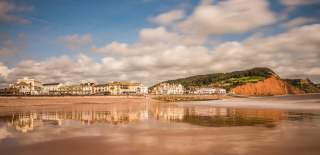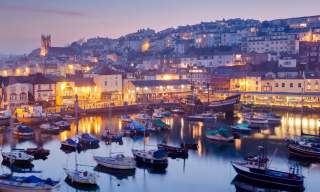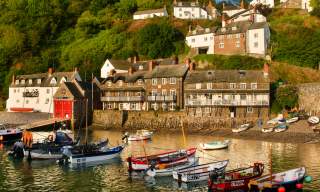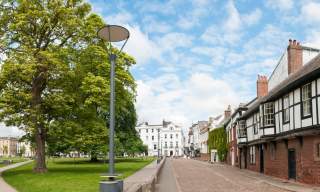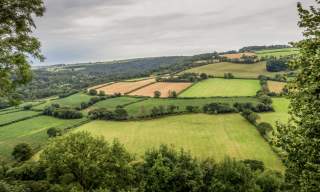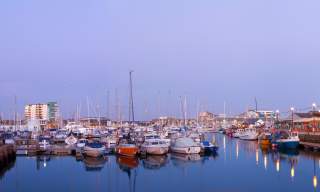With the coronation fast approaching, we thought now would be the perfect time to reflect on the county’s royal connections. From visiting royals to being the fighting ground of the English Civil War, there are plenty of connections throughout history to the British monarchy here.
How much of Devon’s royal history did you know?
The English Civil War
As we’ve already mentioned, huge areas of Devon were used as battle grounds during the English Civil War when the monarchy fought for control against the government. As a county, Devon largely favoured the parliamentarians and large areas of the county, particularly in places like Torrington, there were parliamentary strong holds. You can still see evidence of this in some towns and villages today.
Royal visitors
Devon has seen its fair share of royal visitors from the beginning of England’s monarchy through to the modern day. The first King of England as we know it is often considered to be William I or William the Conqueror, who invaded England from Normandy and established the first royal house. He might have entered England via Hastings in the South East of England, but he secured support in the West Country by laying siege to Exeter for 18 days. After his victory, he would begin building a number of castles and strong holds across the county, some of which can still be found today.
Another William, William of Orange, who would go on to become King William III and rule alongside his wife, Mary II, arrived in England from the Netherlands on the request of parliament to take the throne from his father in law, James II/VII. William first landed on British soil in Brixham before launching his Glorious Revolution and becoming ruler. A statue commemorating his arrival stands in Brixham Harbour to this day.
Devon was also the first experience that Katherine of Aragon had of England. She was sent to England, landing in Plymouth from her native Spain after being betrothed to Arthur Tudor, the oldest son of Henry VII. Shortly after their marriage however, Arthur died, leaving her to become the first wife of Henry VIII.
Exeter is often the destination for royal visitors, being Devon’s county town. As we have mentioned Henry VII, let’s start with him, he visited Exeter in 1497 to thank the people for their loyalty after the city was besieged by Perkin Warbeck. Warbeck claimed to be one of the missing Princes in the Tower and rightful heir to the throne, he returned to England and lay siege in Exeter but his campaign was unsuccessful. King George V visited Exeter in 1915 to tour the city’s military hospitals and later, George VI and his wife, Queen Elizabeth visited after an air raid to survey the damage and speak to the people.
Exeter also played host to King Edward VIII, who unveiled a war memorial and our current King, Charles III, who visited during his capacity of Prince of Wales. While there, he became patron to the Friends of Exeter Cathedral and continues to support them. If that wasn’t enough, several royals have been students at Exeter University, including Zara Tindle and Peter Philips.
It isn’t just Exeter that has welcomed royal visitors, Queen Elizabeth II met her future husband, Philip Mountbatten who would become Duke of Edinburgh, while visiting the Royal Naval College at Dartmouth. So, you could say that Devon played a rather major part in royal history there! The two National Parks, Dartmoor and Exmoor, were at one time known as Royal Forests and were used for royal hunting parties, so no doubt a royal or two has traversed the moors at some point too! Sidmouth has also been host to royal visitors, including Edward VII and the Duke of Connaught, who gave his name to the town’s Connaught Gardens.
Royal residents
Did you know, royalty have called Devon home over the years too? Sidmouth was once the home to Queen Victoria back when she was a minor royal. Though she was born in London, the infant Victoria and her parents, Prince Edward the Duke of Kent and Princess Victoria, moved to Sidmouth where they lived in a manor house that today runs as a hotel. It was while in Sidmouth that an assassination attempt was carried out on the young princess and where, when she was around a year old, her father passed away.
The nine days queen
Some historians don’t count Lady Jane Grey as being part of the British monarchy, but she was queen for nine days before Mary Tudor sentenced her to death, and she was a royal cousin, so we’re going to include her connection to Devon too.
Lady Jane Grey was descended from King Henry VIII’s youngest sister and was named as heir to the throne by her cousin Edward VI before his untimely death. However, Edward’s sister Mary had other ideas and had her imprisoned in the Tower of London and ultimately beheaded. The Greys however had a family connection to Ottery St Mary in East Devon, her grandparents owned Knightstone Manor, which passed into her family’s ownership on their death. Maybe if she’d lived, Lady Jane could have gracefully bowed out of public life by retiring here?
Further back...
Before William I, England was split into different kingdoms, all of which had their own rulers. Devon fell within the Kingdom of Dumnonia, which also covered parts of Cornwall and Somerset and was led by several kings, including King Geraint of Dumnonia. Local historians have written a number of books about this time period where you can find out more about Saxon-era Devon, including local writer Lucy Holland, who released a fiction book, Sister Song, about the time period based in Sidmouth.
Live like a royal
Have you ever noticed that a number of Devon’s hotels have the word Royal in their name? This signifies that a royal has in fact visited that establishment, so next time you come to Devon, why not live like a royal by staying in a royally named hotel?

